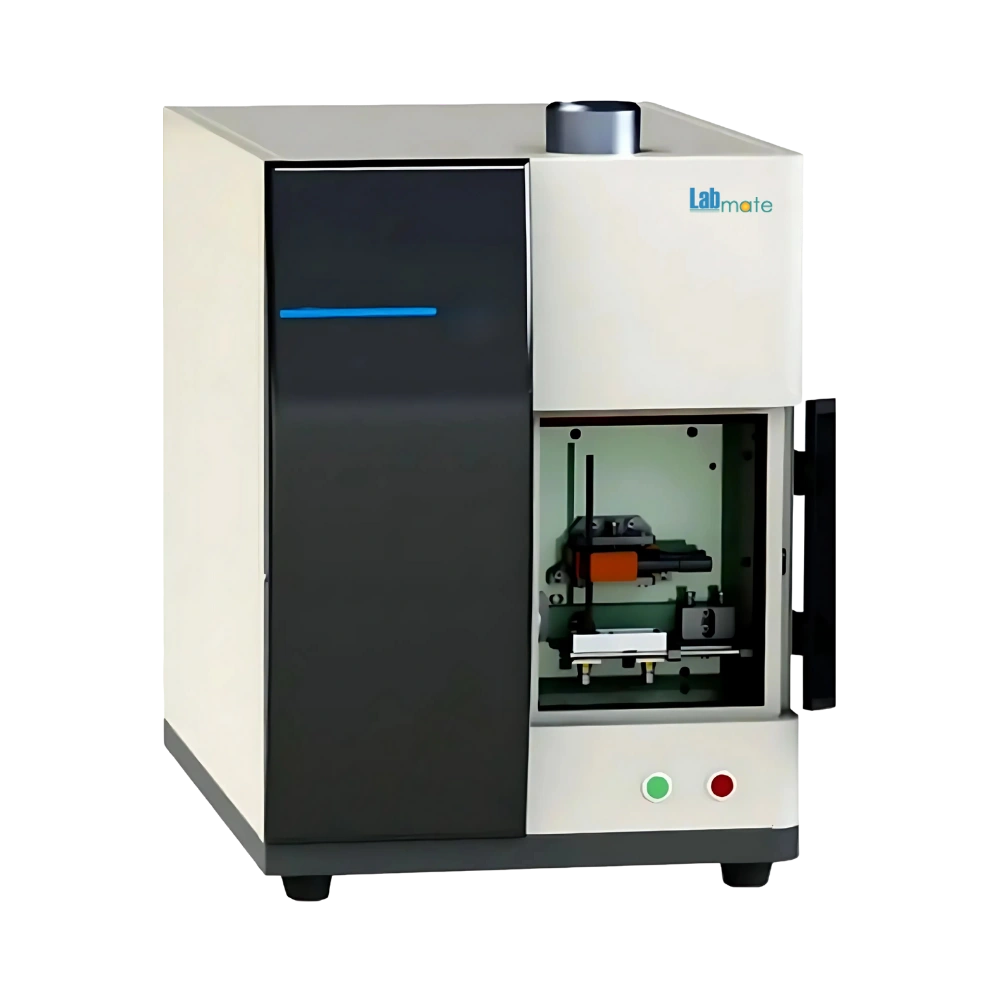
Get Quote
Contact us now to receive a detailed quotation.
Specifications
| Spectral Range | 201 nm to 810 nm |
| Sample Type | Lubricating oil, hydraulic oil, fuel oil, grease, antifreeze, cooling water, electrolyte |
| Elements | Al, Ba, B, Ca, Cr, Cu, Fe, Pb, Mg, Mn, Mo, Ni, K, Na, Si, Ag, Sn, Ti, V, Zn |
| Injection Volume | ≤2ml |
| Injection Mode | Rotating disc electrode |
| Detector | Highly sensitive CMOS array |
| Optical System | Pashen-Runge |
| Focal Length | 400mm |
| Operating Temperature | -10℃ to 40℃ |
| Storage Temperature | -40℃ to 65℃ |
| Operating Humidity | 0 to 95%RH |
| Temperature Control | Thermally stabilized; 37℃±0.1℃ |
| Standards | ASTM D6595, ASTM D6728, NB/SH/T 0865-2013, SN/T 1652-2005, HB 2009 4.1-2012 , DL/T 1550-2016 |
| Power Consumption | ≤500W |
| Power Supply | 220V/50Hz |
| Output Type | AC arc |
| Dimension (W × H × D) | 500 × 720 × 730 mm |
| Packaging Dimension | 960 × 700 × 950 mm |
| Net Weight | 82 kg |
| Gross Weight | 130 kg |
Features
High sensitivity optical analysisOptional Accessories
Disc Electrode- ODΦ12.5mm, IDΦ3.18mm, Thickness 5.08mmApplications
Oil Emission Spectrometer is employed in power plants to monitor lubricating oils in turbines, generators, and transformers for signs of wear or contamination. It is also applicable in research for testing and developing new lubricants.Frequently Asked Questions
1 What is an Oil Emission Spectrometer LMOES-A100?
Oil Emission Spectrometer LMOES-A100 is a high-precision instrument designed to analyze and measure the emission levels of various oils in industrial and laboratory settings.
2 How does Oil Emission Spectrometer LMOES-A100 work?
Oil Emission Spectrometer LMOES-A100 operates by detecting specific wavelengths of light emitted by oil samples, enabling accurate quantification of oil emissions based on spectral analysis.
3 How is Oil Emission Spectrometer LMOES-A100 used in environmental monitoring?
Oil Emission Spectrometer LMOES-A100 is used in environmental monitoring to detect and quantify oil pollutants in air and water, helping organizations comply with environmental regulations.
4 What role does Oil Emission Spectrometer LMOES-A100 play in research and development?
Oil Emission Spectrometer LMOES-A100 is used in R&D to analyze oil emission characteristics, supporting the development of cleaner technologies and fuels.
5 Is Oil Emission Spectrometer LMOES-A100 applicable in food processing industries?
Oil Emission Spectrometer LMOES-A100 is used in food processing industries to monitor oil emissions from machinery, maintaining hygiene and equipment performance.
6 Can Oil Emission Spectrometer LMOES-A100 be used for indoor air quality testing?
Oil Emission Spectrometer LMOES-A100 is capable of detecting oil-based emissions indoors, supporting workplace safety and health standards.
7 How does Oil Emission Spectrometer LMOES-A100 support renewable energy systems?
Oil Emission Spectrometer LMOES-A100 is used to monitor lubricants in wind turbines and solar tracking motors, enhancing the efficiency and reliability of renewable energy systems.
8 Can Oil Emission Spectrometer LMOES-A100 support metallurgical research?
Oil Emission Spectrometer LMOES-A100 is used in metallurgical research to detect wear metals in oil samples, supporting studies on material fatigue and friction.
9 How does Oil Emission Spectrometer LMOES-A100 assist in nanomaterial research?
Oil Emission Spectrometer LMOES-A100 enables detection of nano-scale particles in oil, which is crucial in studying the performance of nano-additives in lubrication.
10 How does Oil Emission Spectrometer LMOES-A100 enhance experimental repeatability in lab research?
Oil Emission Spectrometer LMOES-A100 enhances experimental repeatability by delivering stable, high-precision data across multiple trials and test environments.
11 What is an Oil Emission Spectrometer?
An Oil Emission Spectrometer is an apparatus designed to measure the concentration of various elements in oils and lubricants through emission spectroscopy.
12 How does an Oil Emission Spectrometer work?
It detects light from excited oil atoms in order to identify elements.
13 What elements can be detected using an Oil Emission Spectrometer?
It can detect a variety of elements such as iron, copper, lead, chromium, nickel and tin.
14 What types of oils can be analyzed using Oil Emission Spectrometer?
It can analyze a wide range of oils such as engine oils, hydraulic oils, gear oils, lubricating oils, transformer oils and marine fuels.
15 What kind of maintenance does Oil Emission Spectrometer require?
Regular maintenance includes proper calibration of the apparatus, routine cleaning and software updates.
16 Can Oil Emission Spectrometer analyze oils with high contamination?
It is widely used to analyze oils with high levels of contamination.
17 Can Oil Emission Spectrometer differentiate between fresh oil and used oil?
It is used to identify characteristic changes in the elemental composition of oil over time.
18 What kind of contaminants can be detected by Oil Emission Spectrometer?
It is used for detecting metals and elemental contaminants in the oil.
19 How does an Oil Emission Spectrometer compare to a Mass Spectrometer?
An Oil Emission Spectrometer is used to detect elemental composition of oil samples whereas a Mass Spectrometer is used to analyze both elemental and molecular composition of the samples.
20 Can Oil Emission Spectrometer be used for oil recycling or reprocessing?
It is used in the oil recycling or reprocessing industry to assess the quality of recycled oils.